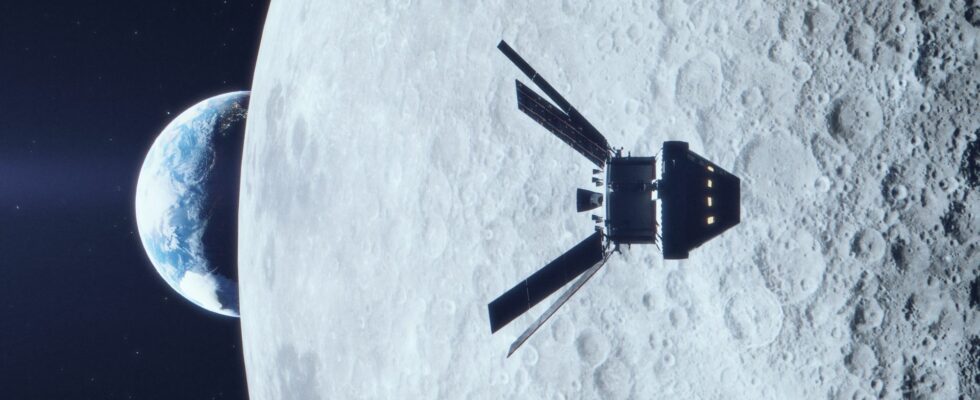Officially, NASA will send astronauts to the Moon at the end of 2025. In reality, this deadline appears more and more untenable. The American Court of Auditors anticipates a shift at the beginning of 2027. NASA is facing too many difficulties to keep its schedule.
The return of American astronauts to the Moon in 2025 is a timetable considered increasingly unrealistic in Washington. This is implicitly what emerges from a report from the Government Accountability Office, the equivalent of the Court of Auditors in the United States. This manned mission, currently scheduled for December 2025, may in reality slip to early 2027.
Published on November 30, it follows a previous progress update dating from September 2022. During this period of almost one year and three months, the GAO recognizes the efforts of the American space agency (NASA) and its subcontractors to advance the Artemis program — the name given to the manned missions to the satellite.
In particular, there was the success of the Artémis 1 mission, which made it possible to test the Space Launch System (SLS) rocket in real conditions, as did the Orion capsule, which would later accommodate a crew (during this flight, it was uninhabited). It was an opportunity to practice entering a lunar orbit, before returning to Earth.
Cascading challenges on the program, the Starship, the combinations…
That’s good, but it’s too little. NASA and its partners still face many challenges in the development of human landing system and spacesuits », Writes the American court of auditors. In particular, there are many obstacles that still need to be overcome, which make a moon landing unlikely in two years.
Among the worrying elements is NASA’s timetable for completing the development of its human landing system. The agency gave itself 79 months to achieve this, but the Court of Auditors notes that this is 13 months less than the average for its other major projects. However, a manned flight to the Moon is an extraordinarily arduous project.

“ The complexity of human spaceflight makes the goal of completing development more than a year faster than average unrealistic », Writes the GAO. This, especially since delays have already accumulated, including on key events in the program. As of September 2023, eight of the thirteen events concerned have been delayed at least six months.
Moreover, ” two of these events have been postponed to 2025 », which is nevertheless the year planned for the debut of the lunar lander. This offers significantly less room for maneuver in the event of difficulty. This also applies to SpaceX, which is a key partner of NASA. Seven months passed between the Starship’s first test and the next. And it’s not yet conclusive.
This is precisely another element of distrust put forward by the organization: SpaceX “ must complete a large number of complex technical works to support the Artemis III lunar landing mission, including developing the ability to store and transfer propellant into orbit “. However, according to NASA, SpaceX “ made limited progress ” in this domain.
The development of the Starship is also a source of concern. Certainly, there was improvement with the second test in November 2023. Several additional steps were able to be validated. But here too, we wonder if SpaceX will have enough time to validate all the steps required to have a rocket capable of making the lunar shuttle.


Manufacturing the new spacesuits is also a challenge. “ NASA’s initial design did not include the minimum emergency life support equipment needed for the Artemis III mission », Points out the GAO. From then on, Axiom, which takes care of these combinations, “ could review the design of certain aspects ”, which would cause another delay.
All these elements taken together make initial compliance with NASA’s schedule quite illusory. For the GAO, in any case, it is “unlikely that the crewed moon landing of Artemis III will take place in 2025”. It will be necessary to add at least one more year to resolve the current difficulties and prepare for possible unforeseen events.
Artemis III would therefore slide from December 2025 to early 2027, according to GAO estimates. It remains to be seen whether NASA will eventually align with this new schedule. As for the previous mission, on the other hand, the deadline remains the same for the moment: Artemis II is supposed to take place at the very end of 2024. It will involve reproducing the flight of Artemis I , but with a crew.


Subscribe for free to Artificielles, our newsletter on AI, designed by AIs, verified by Numerama!
